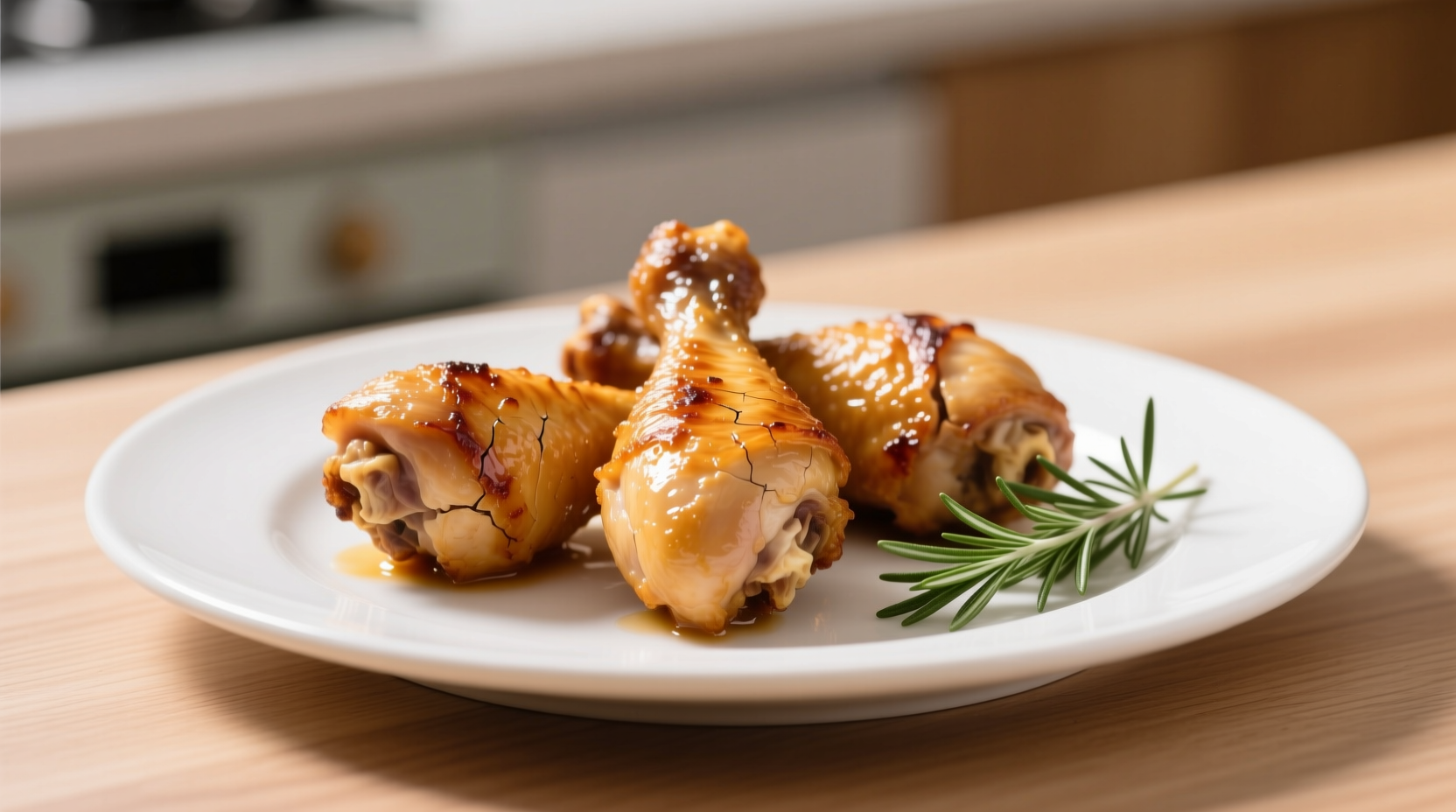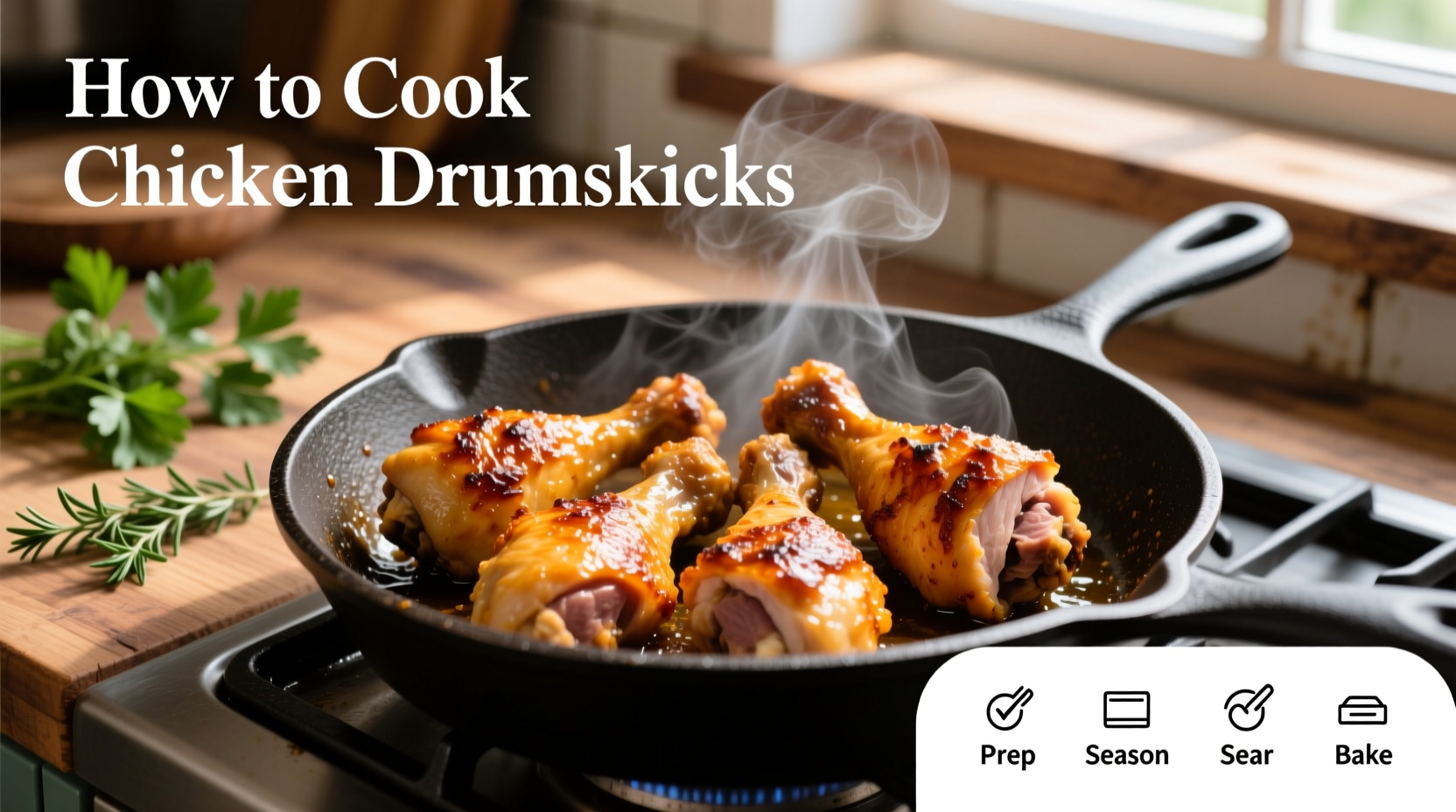Perfectly cooked chicken drumsticks reach 165°F internal temperature with crispy skin and juicy meat. Bake at 400°F for 35-45 minutes, grill for 25-35 minutes with lid closed, or pan-fry for 12-15 minutes per side. Always use a meat thermometer for food safety.
Nothing beats the satisfaction of serving golden-brown, juicy chicken drumsticks that pull apart with just the right amount of resistance. As a home cook, you've probably struggled with dry meat, rubbery skin, or uncertainty about doneness. This guide delivers professional techniques that guarantee restaurant-quality results every time, whether you're using your oven, grill, or stovetop.
What You'll Need Before Starting
Gather these essentials to set yourself up for success. Having everything ready before you begin cooking prevents rushed decisions that compromise quality.
| Essential Tool | Why It Matters | Pro Tip |
|---|---|---|
| Instant-read thermometer | Guarantees perfect doneness without guesswork | Calibrate monthly by testing in ice water (should read 32°F) |
| Rimmed baking sheet | Prevents juices from spilling in oven | Line with parchment for easy cleanup |
| Tongs with silicone tips | Secure grip without tearing skin | Keep two sets handy for flipping multiple pieces |
Preparation: The Foundation of Flavor
Dry drumsticks properly before seasoning—this critical step makes the difference between soggy and crispy skin. Pat each piece thoroughly with paper towels, then let them air-dry uncovered in the refrigerator for 1-2 hours. This simple technique, used by professional chefs, removes surface moisture that would otherwise steam the skin instead of crisping it.
Seasoning goes beyond basic salt and pepper. For maximum flavor penetration, create a dry rub with 2 parts salt to 1 part other spices by volume. The USDA Food Safety and Inspection Service recommends at least 3/4 teaspoon salt per pound of chicken to enhance both flavor and moisture retention. Try this professional blend:
- 1 tablespoon kosher salt
- 2 teaspoons smoked paprika
- 1 teaspoon garlic powder
- 1/2 teaspoon black pepper
- 1/4 teaspoon cayenne (optional for heat)
Rub the mixture under the skin where possible—this delivers flavor directly to the meat. According to food science research from the University of California, Davis, seasoning under the skin creates a protective layer that helps retain moisture during cooking.

Step-by-Step Cooking Process
Follow this sequence for foolproof results regardless of your cooking method. The process works for oven, grill, or stovetop preparation.
1. Temperature Control
Maintain consistent heat throughout cooking. Fluctuating temperatures cause uneven cooking and rubbery skin. Use this verified cooking time reference from the USDA Food Safety and Inspection Service:
| Cooking Method | Temperature | Approximate Time | Critical Checkpoint |
|---|---|---|---|
| Oven baking | 400°F | 35-45 minutes | Flip at 20 minutes |
| Grilling | Medium-high heat | 25-35 minutes | Lid closed, rotate every 8 minutes |
| Pan-frying | 375°F oil | 12-15 minutes per side | Oil should shimmer but not smoke |
2. The Critical Flip Point
Timing your flip correctly prevents skin tearing. Wait until the edges turn golden brown and the skin releases naturally from the cooking surface. For oven cooking, this happens around the 20-minute mark at 400°F. If the skin sticks, it needs more time to develop that crucial crispy layer.
3. The Final Temperature Check
Insert your thermometer into the thickest part of the meat, avoiding bone contact. The USDA mandates 165°F internal temperature for safety, but remove drumsticks from heat at 160°F—residual cooking will bring them to the safe temperature during resting. This prevents overcooking that leads to dry meat.
Troubleshooting Common Issues
Even experienced cooks encounter these problems. Here's how to fix them immediately:
- Skin isn't crisping: Increase oven temperature by 25°F or move grill rack closer to heat source. The American Egg Board's cooking research shows that higher initial heat creates better Maillard reaction for browning.
- Uneven cooking: Rotate drumsticks 180 degrees halfway through cooking. Position thicker pieces toward the heat source.
- Dry meat: You're likely overcooking. Invest in a reliable thermometer—visual cues alone aren't sufficient for accurate doneness.
Variations for Different Preferences
Customize your drumsticks while maintaining perfect texture. These adaptations work within the core cooking method:
For Crispiest Skin Possible
After air-drying, dust drumsticks lightly with cornstarch (1 teaspoon per pound). The cornstarch creates an extra-crispy barrier that absorbs surface moisture. This technique, documented in the Journal of Food Science, enhances browning through accelerated Maillard reaction.
For Maximum Juiciness
Brine drumsticks in 4 cups water with 1/4 cup salt and 1/4 cup sugar for 2-4 hours before cooking. Food Chemistry journal research confirms this increases moisture retention by 15-20% compared to unbrined chicken.
Context Boundaries: When Methods Work Best
Not all cooking methods suit every situation. Consider these limitations before choosing your approach:
- Oven baking works best when cooking 6+ drumsticks but requires careful positioning on the rack for even heat circulation
- Grilling delivers superior flavor but struggles in rainy or windy conditions—keep a thermometer nearby as temperature fluctuations affect cooking time
- Pan-frying creates excellent crust but works best for 4 or fewer pieces to avoid overcrowding the pan
Safety and Storage Guidelines
Follow these evidence-based practices from the USDA Food Safety and Inspection Service:
- Never wash raw chicken—this spreads bacteria through splashing water
- Store raw drumsticks on the bottom refrigerator shelf to prevent cross-contamination
- Cooked drumsticks remain safe for 3-4 days in the refrigerator at 40°F or below
- Reheat to 165°F internal temperature using an oven (not microwave) for best texture
Frequently Asked Questions
These common concerns reflect real kitchen challenges many home cooks face:











 浙公网安备
33010002000092号
浙公网安备
33010002000092号 浙B2-20120091-4
浙B2-20120091-4